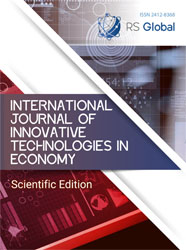THE IMPACT OF THE GREATER ARAB FREE TRADE AREA ON ALGERIA’S INTRA-ARAB FOREIGN TRADE
Abstract
This study aims to examine the reality of Algeria’s foreign trade in recent years within the framework of trade liberalization and the country's efforts to diversify its exports, reduce its import bill, and stimulate other productive sectors. It also seeks to assess the extent to which Algeria’s foreign trade has been affected by its accession to the Greater Arab Free Trade Area (GAFTA).
The study concluded that Algeria’s intra-Arab trade with other Arab countries remains limited and has not achieved the objectives set for joining this area, as it did not exceed 5 billion USD. Tunisia is considered Algeria’s largest Arab economic partner, followed by Saudi Arabia, Egypt, and the United Arab Emirates.
References
Ahmed El Shazly, et al. (2022, May). Intra-Arab Trade: Reality, Challenges, and Future Prospects. Arab Monetary Fund, United Arab Emirates.
Jamal Ben Ayada, & Lakhdar Ben Saïd. (2023). The Reality of Arab Trade Exchange under the Greater Arab Free Trade Area Agreement. Al-Muntada Journal of Economic Studies and Research, 7(1).
Omar Hassani. (2019). The Impact of Implementing the Greater Arab Free Trade Area on the Volume of Intra-Arab Trade: Developments, Problems, and Solutions. Journal of Finance and Markets, 6(1).
Mahmoud Beili, & Hajar Beghassa. (2008). The Impact of the Greater Arab Free Trade Area on Syrian Trade after Full Implementation. National Agricultural Policy Center, Trade Policy Department.
Ministry of Trade and Export Promotion. (2024, January 7). Greater Arab Free Trade Area. Retrieved from https://www.commerce.gov.dz/a-grande-zone-arabe-de-libre-echange
Algerie Maintenant. (n.d.). Retrieved from https://algeriemaintenant.dz/
Algeria Press Service (APS). (n.d.). Arab Trade Volume Reaches $7.4 Billion. Retrieved from https://www.aps.dz/ar/economie/133472-7-4
Views:
161
Downloads:
56
Copyright (c) 2025 Amira Bahri, Assma Boudounet

This work is licensed under a Creative Commons Attribution 4.0 International License.
All articles are published in open-access and licensed under a Creative Commons Attribution 4.0 International License (CC BY 4.0). Hence, authors retain copyright to the content of the articles.
CC BY 4.0 License allows content to be copied, adapted, displayed, distributed, re-published or otherwise re-used for any purpose including for adaptation and commercial use provided the content is attributed.











